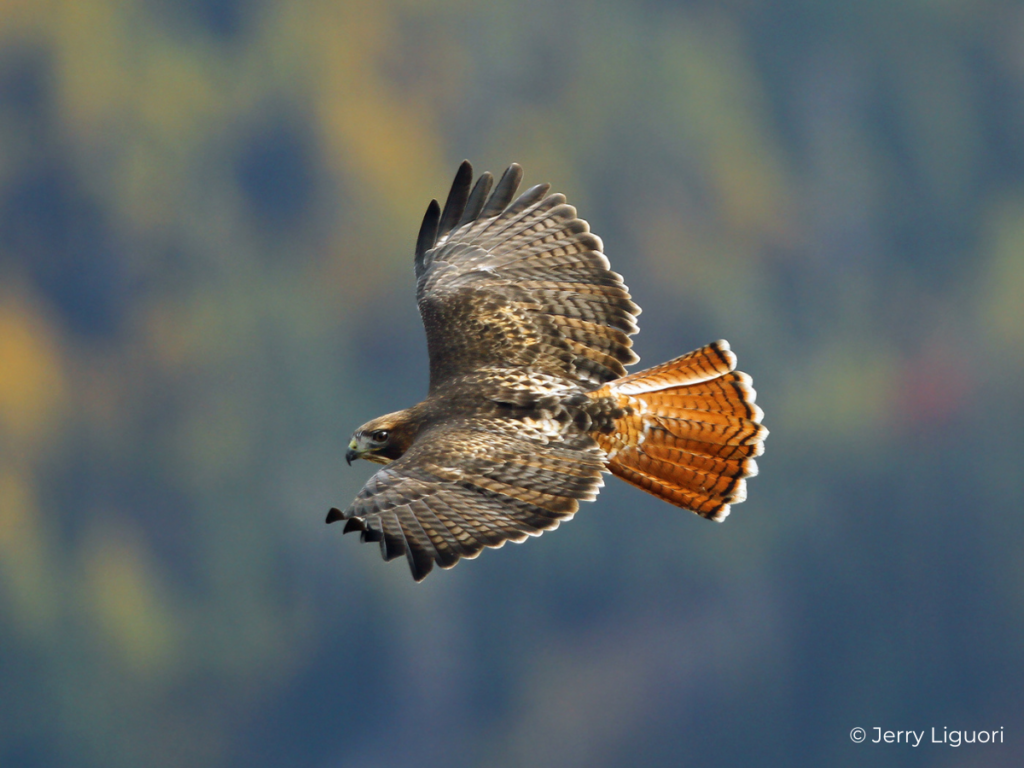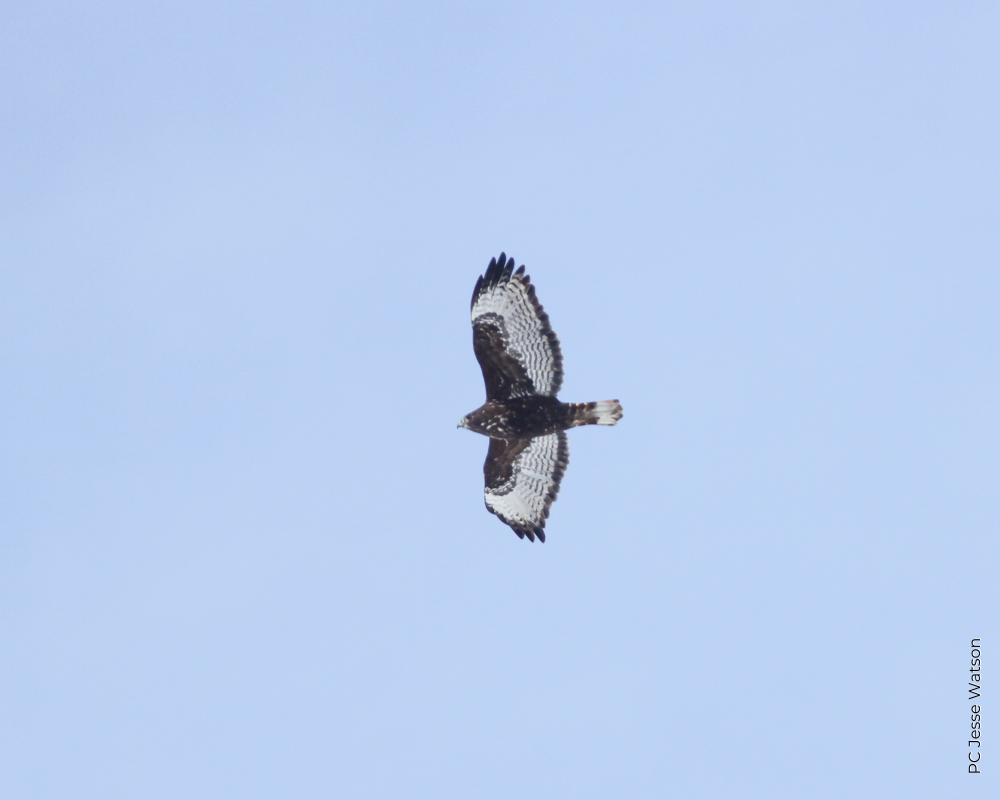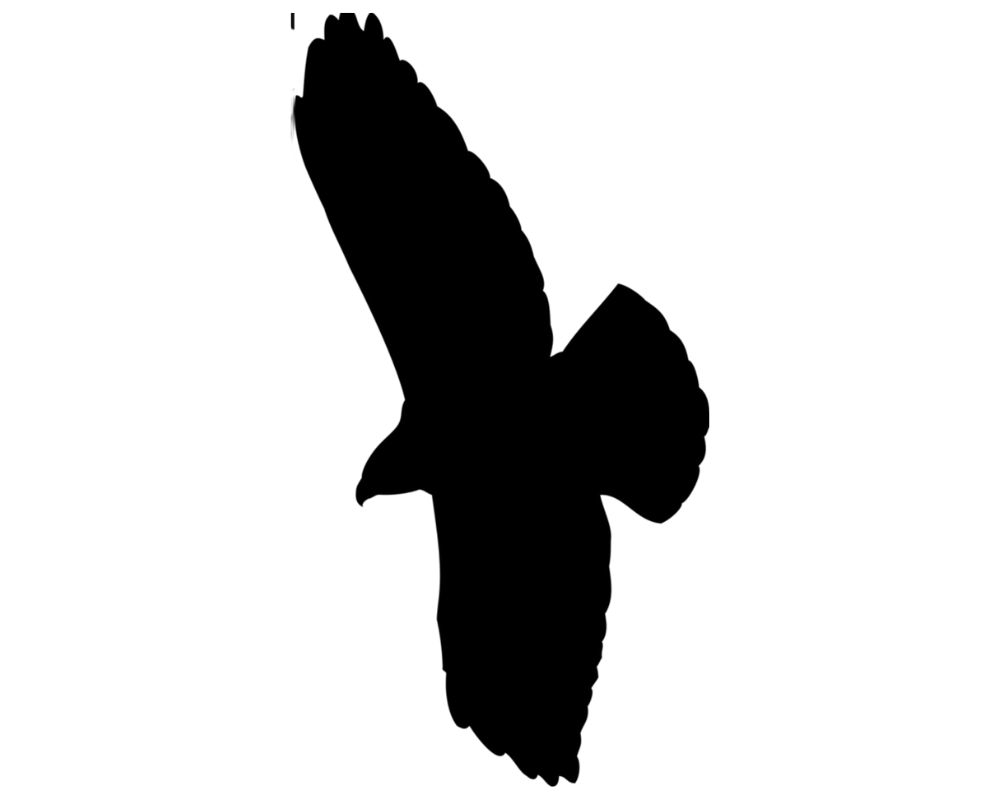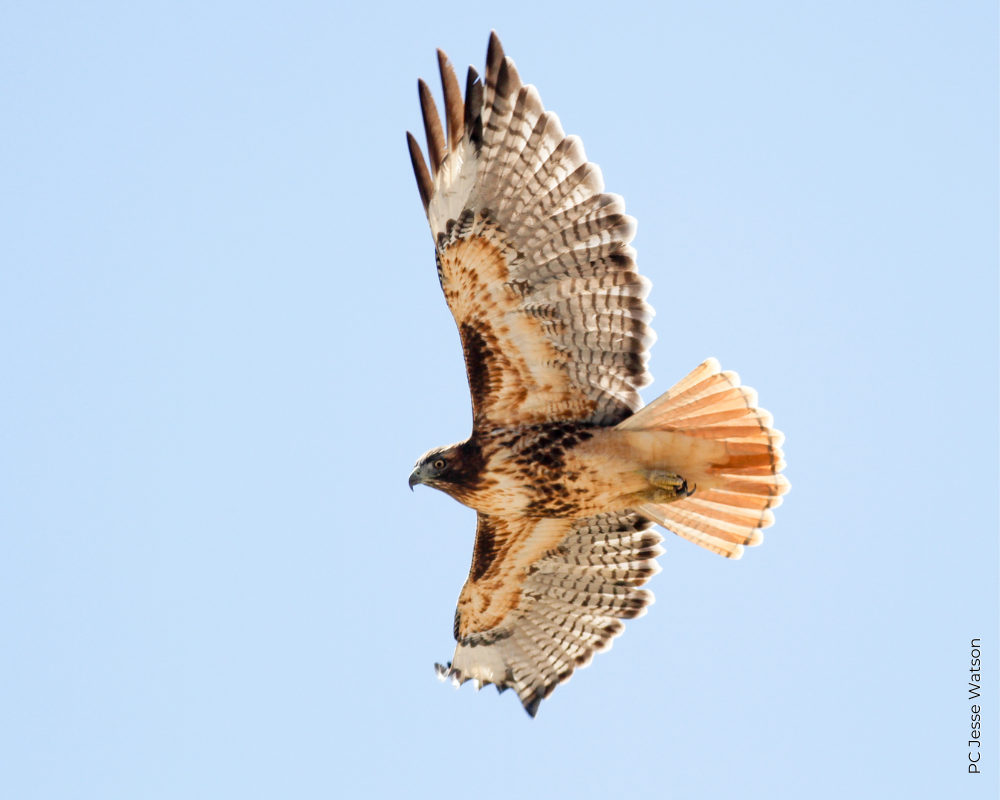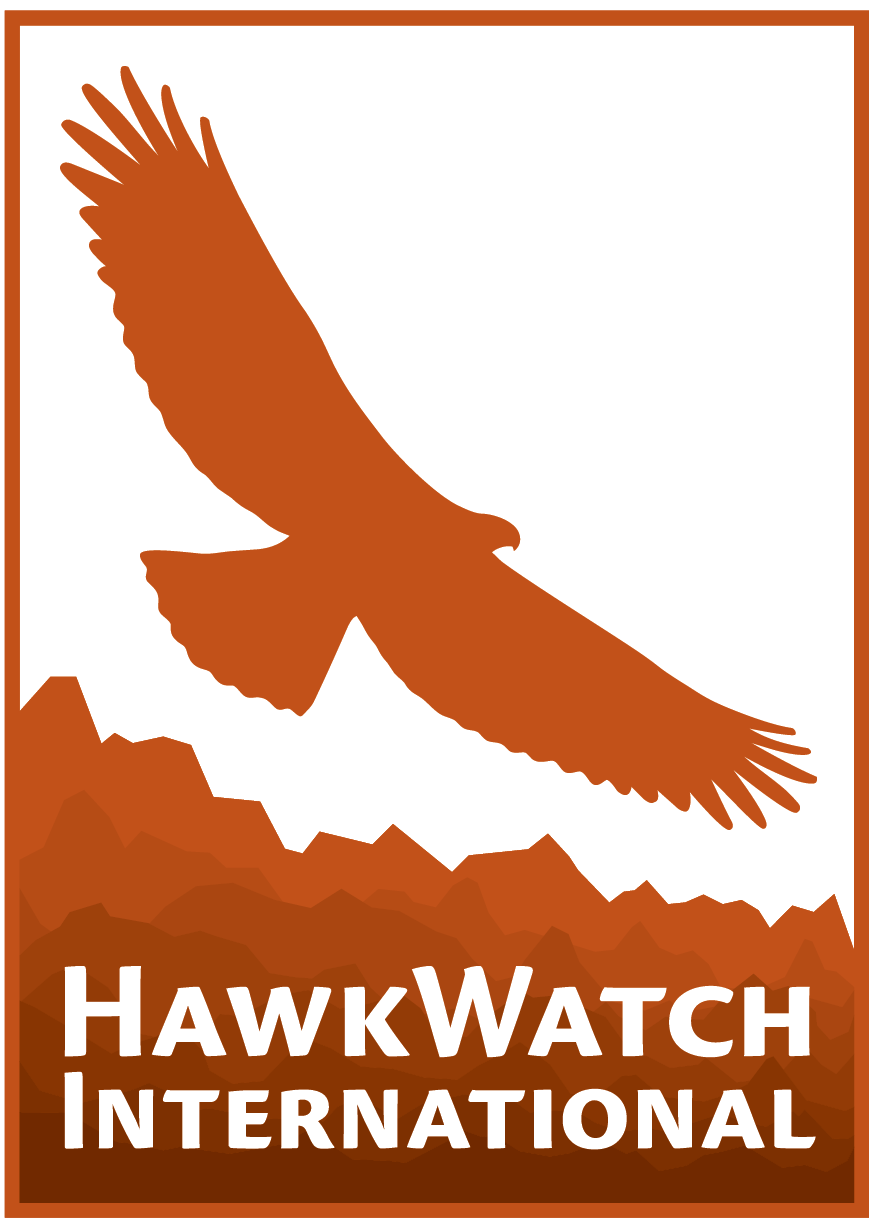Overview
The Red-tailed Hawk is the most familiar raptor in North America, evident by every movie soundtrack that plays its screeching call whenever an outdoor scene is shown. They are widespread and common, found in a wide variety of open and semi-open habitats throughout North America. Red-tails are often seen along roadsides where their hulking figure is hard for even non-birders to miss. They are generalists, both in terms of the habitats they occupy and the animals they prey upon. Small rodents are typical prey items, but Red-tails also take birds, reptiles, and just about anything else of like size that makes itself visible. Red-tails hunt efficiently while hovering and kiting from mid to high elevation, as well as from a perch or even a high-speed stoop.
Red-tailed Hawk is smaller than an eagle but large for a buteo. The Eastern race breeds from the East Coast to the east side of the Rocky Mountains from Texas into parts of Alaska. Western Red-tailed Hawks nest from the Pacific Coast to the western Great Plains and north to southern Alaska. Harlan’s race is scattered as a breeder from western Alaska through the Yukon, Northwest Territories to southern Alberta. Red-tailed Hawks are generally silent away from the nesting territory, but when calling, make a raspy, loud, downslurred “krreeeeerrr.” Juveniles give a high-pitched, repeated begging “whee-whee-whee-whee…”
The Alaskan (B. j. alascensis), Fuertes (B. j. fuertesi), and Florida race (B. j. umbrinus) are other proposed races in North America. It is likely Alaskan is simply a form of the Western race. Fuertes overlaps greatly in plumage and range with the Eastern race and may be a form of Eastern rather than a distinct subspecies. The Florida race occurs within a limited range of southern Florida. It is heavily marked underneath and often with multiple tail bands similar to many Western birds. Little is known about the extent of its plumage variation or its exact range. The “Northern” or “Canadian” form (B.j. abieticola) breeds across the boreal forest of Canada. It is considered a form of the Eastern race, which shows heavily marked undersides, a dark throat, and multiple tail bands. Krider’s (B. j. kriderii) has been lumped with Eastern in most literature but is generally distinctive. Krider’s breeds in the northern Great Plains from central Alberta to South Dakota. Krider’s is strikingly pale overall with a mostly white head and tail, very faint patagial marks and bellybands, and white mottling on the upperwings. Northern and Krider’s are likely better representations of subspecies than Alaskan and Fuertes.
